Wind farms are often celebrated as a leading solution in the global shift toward renewable energy, aiming to reduce our dependence on fossil fuels and combat climate change. However, wind farms come with their own set of environmental and health costs, ones that are rarely discussed.
While the benefits they offer are fairly clear, examining the often overlooked impacts of these machines is an essential part of us developing a responsible and holistically sound approach to renewable energy – one that balances technological innovation with environmental health.
Land Use and Habitat Disruption
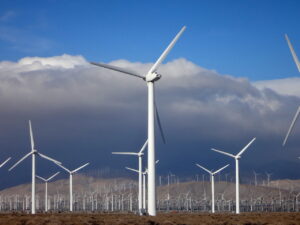
Wind farms require substantial amounts of land for turbine installation, maintenance access, and associated infrastructure. In both rural and offshore areas, wind farms can disrupt local ecosystems and wildlife habitats. In fragile environments, turbines and construction activity can lead to habitat fragmentation, which threatens biodiversity and disrupts migration patterns. For example, in areas with endangered species, such as certain prairies and grasslands, wind farm installations have led to habitat loss for species already at risk.
Moreover, offshore wind farms, which are growing in popularity due to their higher wind availability, have impacts on marine habitats. The construction of turbines disturbs the seabed, releasing sediment and disrupting marine ecosystems. Marine animals that rely on clear, undisturbed water may find their habitats degraded, while long-term infrastructure and underwater cables add further disruption.
Birds and Bats
Birds and bats are among the most affected species by wind turbines, which, despite being situated in open spaces, often occupy migratory routes and natural habitats. Studies estimate that millions of birds die annually from collisions with wind turbines worldwide. The issue is particularly concerning for raptors, migratory species, and endangered birds that are more likely to fly within the range of turbines.
Bats, similarly affected, are especially vulnerable as many are drawn to turbines by the low-frequency sounds they emit. Wind turbines also create air pressure differentials that harm bats’ sensitive respiratory systems. Research has shown that bat fatalities are highest in areas with densely packed turbines, with some species facing steep population declines in wind farm regions.
Impact on Marine Life
Offshore wind farms introduce new challenges for marine life, particularly large mammals like whales. Underwater construction activities generate loud noises that disturb marine animals, and even after construction, the ongoing low-frequency sounds from turbines and cables disrupt the underwater soundscape that marine life relies on. Whales, which use echolocation to navigate, find it increasingly difficult to communicate, find mates, and avoid predators in such noise-heavy waters.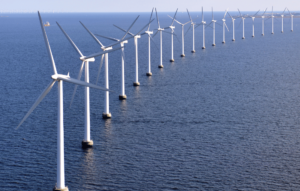
The North Atlantic right whale, an endangered species, is one example of a species threatened by noise pollution from offshore wind farms. Studies show that high levels of noise pollution interfere with their echolocation, crucial for migration, hunting, and avoiding collisions with ships. In some regions, increased whale strandings have been linked to nearby offshore wind farm activities – this is hotly debated at the moment though, and hard to know for sure without further study. This impact on whale populations reveals a broader ecological consequence, as the disruption of whale communities can cascade through the marine ecosystem, impacting other species and the health of marine biodiversity.
Noise Pollution and Health Concerns for Local Communities
While offshore wind farms affect marine life, onshore wind farms can have significant implications for nearby human communities. Wind turbines produce low-frequency sounds, commonly referred to as “infrasound,” that some residents have associated with a range of symptoms, including sleep disturbances, headaches, and anxiety. Although scientific consensus on “Wind Turbine Syndrome” is still emerging, enough anecdotal evidence exists to suggest that the noise may pose real health risks.
The World Health Organization (WHO) has acknowledged noise pollution as a significant health risk factor and recommends lower noise levels than those sometimes found near wind farms. For communities living within close proximity to these turbines, sleep disturbances can lead to chronic stress, which has long-term implications for cardiovascular and mental health. As wind farms expand, careful site selection and buffer zones become increasingly important to protect local communities from potential adverse health effects.
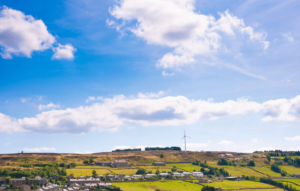
Visual Pollution and Community Resistance
For residents in rural or scenic areas, the towering structures of wind turbines can alter the landscape dramatically, leading to what is known as “visual pollution.” Wind turbines are often over 300 feet tall, with blades that can span up to 250 feet, dominating the skyline and detracting from natural views. This visual impact can lead to a sense of loss, especially in areas that rely on natural beauty for tourism or local pride.
The presence of wind farms in communities has sparked the “Not In My Backyard” (NIMBY) phenomenon, where individuals support renewable energy but oppose nearby installations due to visual and noise concerns. This community resistance can slow the expansion of wind energy projects, highlighting the importance of balancing wind farm placement with community needs.
Economic Costs and Efficiency Limitations
The economic viability of wind farms can be complex, particularly when considering their high initial costs. Building, transporting, and installing wind turbines requires significant investment, often funded by taxpayer subsidies or government incentives. The maintenance of turbines, especially in offshore environments, adds ongoing costs. Despite their renewable nature, wind farms have a relatively low energy density compared to fossil fuels and require significant backup power sources to ensure a consistent energy supply when winds are low.
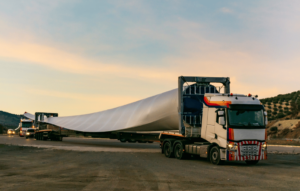
This variability in power generation is a primary challenge for integrating wind energy into the power grid. Many areas must use supplementary power sources, such as natural gas, to account for times when wind production lags. This limitation underscores the need for a diverse mix of renewable energy sources rather than an over-reliance on wind power.
Environmental Costs of Turbine Production and Disposal
Wind turbine production is surprisingly resource-intensive, relying on rare earth
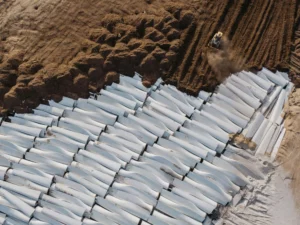
metals, steel, and concrete, which have their own environmental footprints. Mining for materials like neodymium, used in turbine magnets, often involves environmentally damaging practices that pollute land and water sources. Transporting and constructing turbines also have carbon costs that, while lower than fossil fuels, still contribute to emissions.
End-of-life disposal is another issue. Wind turbine blades, primarily made from non-recyclable composite materials, pose significant waste disposal challenges. Many turbine blades end up in landfills, where they remain for decades, raising concerns about long-term environmental impacts.
Alternatives and Potential Solutions
While wind farms present challenges, there are ways to reduce their impact. Improved site selection processes that avoid key habitats, migratory routes, and densely populated areas can mitigate wildlife and human health concerns. For example, developing technologies that emit fewer low-frequency sounds or modifying blade structures to reduce bird and bat mortality could alleviate some of these ecological impacts.
Integrating other renewable energy sources, like solar, geothermal, and hydroelectric power, provides a diversified energy grid that reduces the demand on any one source, including wind. This more balanced approach allows renewable energy to grow sustainably without overburdening specific ecosystems or communities.
Conclusion
Wind energy has become a hopeful tool in the fight against climate change, offering a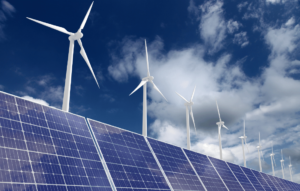 cleaner alternative to burning fossil fuels. However, as we invest in wind power, it is crucial to recognize the environmental and health costs that come with it. By carefully considering where and how we install wind farms and addressing their impact on wildlife, marine life, and local communities, we can work toward a renewable future that respects both ecological balance and public health. We also need to be sure to strive for greater innovation within the manufacturing, transportation, and recycling aspects of this new technology.
cleaner alternative to burning fossil fuels. However, as we invest in wind power, it is crucial to recognize the environmental and health costs that come with it. By carefully considering where and how we install wind farms and addressing their impact on wildlife, marine life, and local communities, we can work toward a renewable future that respects both ecological balance and public health. We also need to be sure to strive for greater innovation within the manufacturing, transportation, and recycling aspects of this new technology.
Wind farms can have a place in our future, but they must be implemented with responsibility, innovation, and respect for the ecosystems we aim to protect. Only then can renewable energy be truly sustainable.








